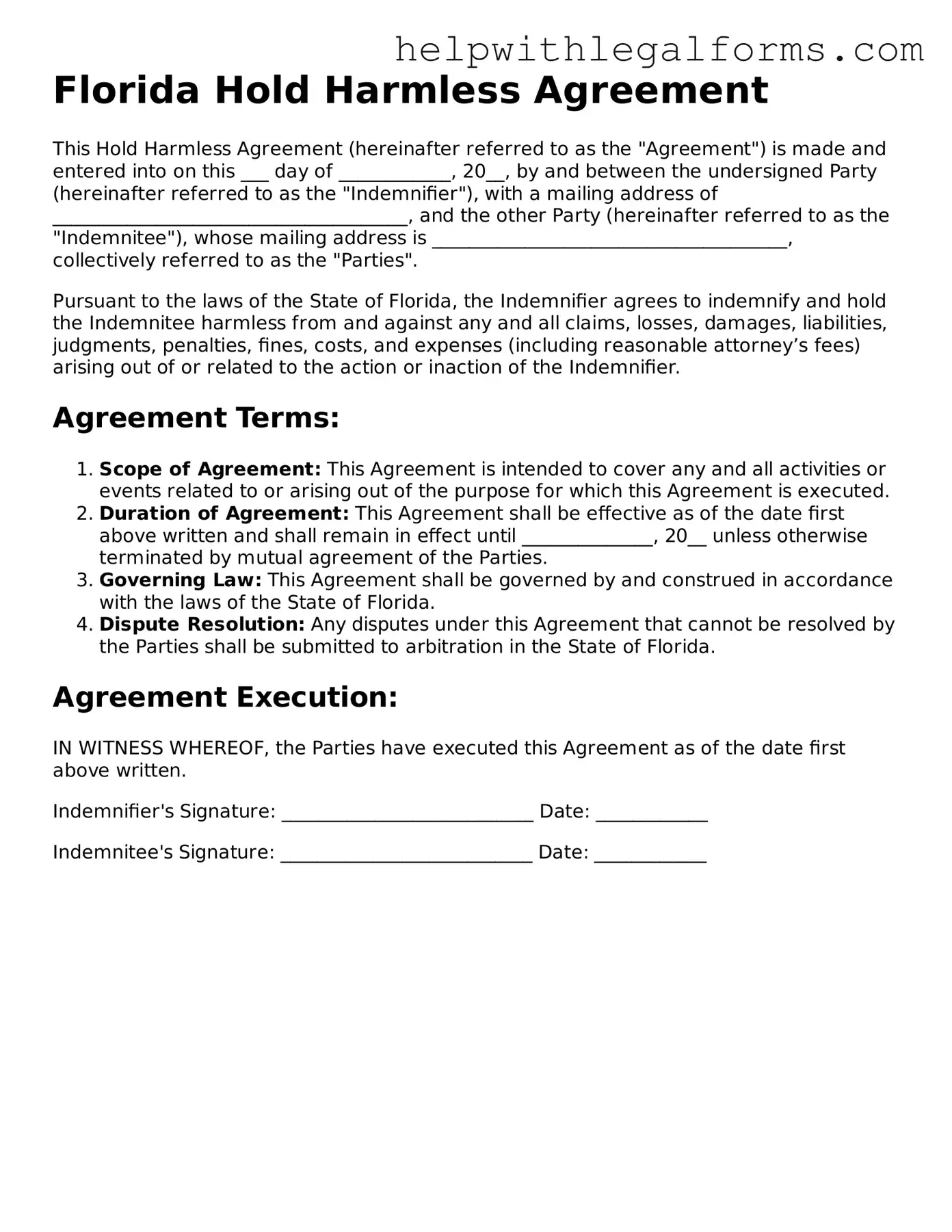What is a Florida Hold Harmless Agreement?
A Florida Hold Harmless Agreement is a legal document that transfers the risk of legal liability from one party to another. It is used in various circumstances, such as construction projects, event hosting, or any activity involving potential risks. This agreement ensures that the party providing services or allowing use of property is not held liable for any injuries, damages, or losses that may occur.
Who needs to sign a Florida Hold Harmless Agreement?
Both the party seeking protection (the indemnitee) and the party agreeing to accept liability (the indemnifier) need to sign the Florida Hold Harmless Agreement. In certain cases, witnesses or notaries may also be required to sign, to ensure the validity and enforceability of the agreement.
Is a Florida Hold Harmless Agreement legally binding?
Yes, when properly executed, a Florida Hold Harmless Agreement is legally binding. This means that parties are legally obligated to adhere to the terms set out in the document, and failure to do so may result in legal action. It is important to ensure that the agreement is drafted clearly and complies with Florida laws to be enforceable.
What are the key elements of a Florida Hold Harmless Agreement?
A Florida Hold Harmless Agreement should include identification of the parties involved, a detailed description of the activity or situation being covered, the scope of protection, any exclusions, and the duration of the agreement. Clauses specifying the jurisdiction, dispute resolution mechanism, and any insurance requirements are also vital components.
Can a Florida Hold Harmless Agreement be customized?
Yes, a Florida Hold Harmless Agreement can and often should be customized to suit the specific requirements of the parties and the nature of the activity involved. It's important to tailor the document to clearly define the scope of indemnity and ensure all relevant risks are addressed.
Are there any limitations to a Florida Hold Harmless Agreement?
Like any legal agreement, a Florida Hold Harmless Agreement has its limitations. It cannot provide protection against liability for intentional wrongdoing or gross negligence. Additionally, its enforceability may be affected by state laws governing indemnification and liability.
How can parties ensure the effectiveness of a Florida Hold Harmless Agreement?
To ensure the effectiveness of a Florida Hold Harmless Agreement, parties should have the document reviewed by legal professionals familiar with Florida law. It's also crucial to clearly define the terms, ensure mutual understanding and agreement, and properly execute the document according to state requirements.
What happens if a dispute arises under a Florida Hold Harmless Agreement?
If a dispute arises under a Florida Hold Harmless Agreement, the resolution will depend on the terms outlined in the agreement, specifically the dispute resolution clause. This may involve negotiation, mediation, arbitration, or litigation, depending on what the parties have agreed upon.
Can a Florida Hold Harmless Agreement be terminated?
Yes, a Florida Hold Harmless Agreement can be terminated based on the conditions stipulated within the agreement. Common provisions for termination include the completion of the activity, mutual consent, or a breach of the agreement. The method and conditions of termination should be clearly defined in the agreement.
Where can I obtain a Florida Hold Harmless Agreement?
A Florida Hold Harmless Agreement can be obtained through a legal professional who will ensure that the agreement is properly drafted to meet your specific needs and complies with Florida law. Alternatively, templates are available online, but they should be reviewed and potentially customized by a legal professional to ensure adequacy and enforceability.
